Ever
find
yourself
hobbling
around
after
a
pickup
basketball
game,
cursing
aching
arches,
or
hosting
a
pity
party
for
your
ankles
post-run?
It
might
be
time
to
examine
footwear
choices.
In
my
career,
I
have
seen
countless
bruised
toes
and
taped-up
joints,
and
I’ve
learned
that
a
solid
pair
of
shoes
can
transform
athletic
endeavors
from
painful
ordeals
into
enjoyable,
results-driven
sessions.
Footgear
isn’t
the
flashiest
purchase,
but
it
remains
a
true
champion
in
preventing
injuries
and
keeping
strides
comfortable
on
any
surface.
Health
is
what’s
most
important
when
it’s
all
said
and
done.
Why
Footgear
Matters
for
Injury
Prevention
Shoes
are
the
primary
barrier
between
your
body
and
the
ground.
A
well-designed
pair
delivers
support,
cushioning,
and
stability,
all
of
which
are
vital
in
athletic
pursuits,
which
is
something
any
foot
doctor
will
confirm.
Ignore
that
reality,
and
performance
numbers
plummet,
morale
dips,
and
ankles
or
knees
can
come
under
siege.
Shock
Absorption
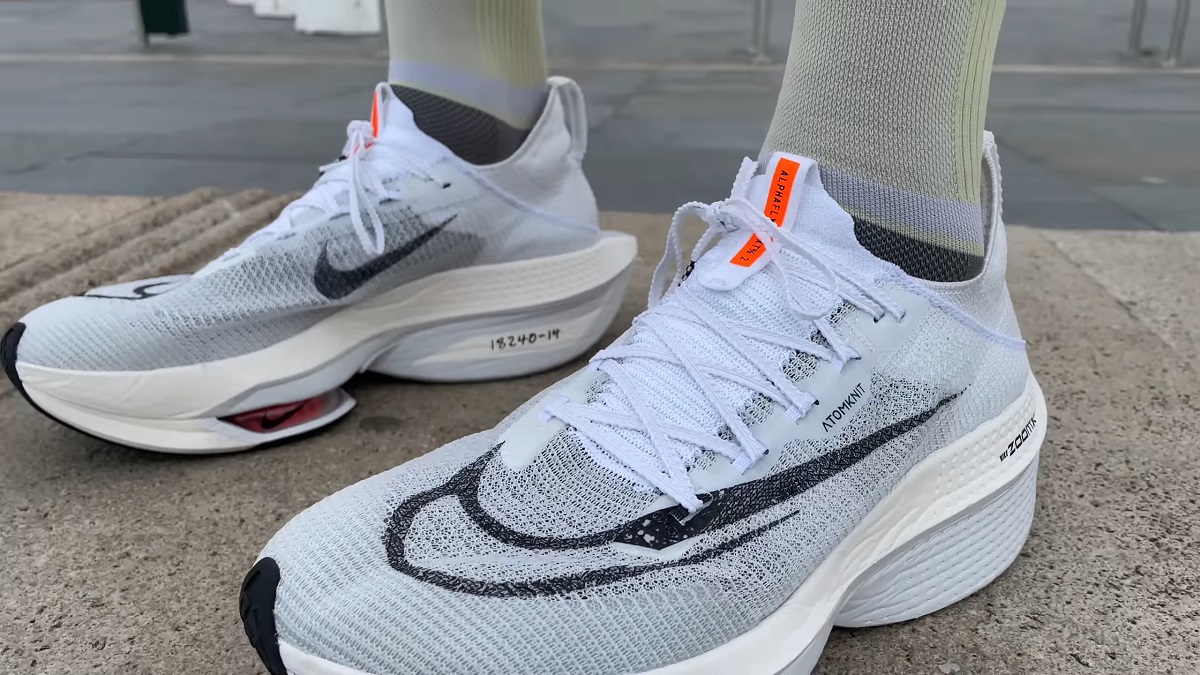
Nike
Air
Zoom
Alphafly
NEXT%|YouTube
Screenshot/Ben
Parkes
Solid
cushioning
lessens
the
impact
each
time
feet
hit
the
ground.
High-impact
activities
such
as
running
and
basketball
place
serious
strain
on
bones
and
muscles.
Quality
shoes
buffer
those
jarring
forces,
sparing
feet
a
world
of
hurt.
Support
and
Alignment
Arches
need
attentive
care,
or
they’ll
revolt
at
the
worst
times.
Footgear
with
structured
support
can
reduce
excessive
inward
or
outward
rolling
(overpronation
or
supination).
No
one
likes
hearing
weird
foot
diagnoses
from
a
doctor
when
the
solution
could
be
as
simple
as
picking
the
right
sneakers.
Traction
and
Stability
Slip-and-fall
comedy
routines
might
be
entertaining
to
watch,
but
it’s
best
to
avoid
them
during
serious
games.
Sport-specific
treads
keep
athletes
from
sliding
unexpectedly.
Soccer
cleats,
for
instance,
dig
into
grass
or
turf,
improving
balance
and
maneuverability.
Common
Injuries
That
Can
Be
Dodged
Feet
endure
countless
repetitive
forces
during
sports.
Poorly
selected
or
ill-fitting
shoes
can
add
strain
to
already
overworked
muscles,
tendons,
and
bones.
A
few
of
the
most
prevalent
foot-related
issues
include:
Stress
Fractures
Tiny
cracks
can
appear
in
bones
from
repetitive
force,
often
tied
to
running
or
jumping.
Footgear
that
provides
balanced
weight
distribution
reduces
the
likelihood
of
that
frightening
scenario.
Extra
pressure
in
a
single
spot
is
a
big
no-no.
Those
who
choose
shoes
with
destroyed
insoles
or
flimsy
support
often
find
themselves
hobbling
to
the
nearest
medical
professional.
Plantar
Fasciitis
Inflammation
of
the
tissue
running
from
heel
to
toes
can
bring
about
stabbing
pains
that
steal
the
joy
from
morning
strolls
and
training
sessions.
Shoes
with
robust
arch
support
and
appropriate
cushioning
ease
the
strain
on
that
connective
band.
Something
as
minor
as
a
compressed
insole
can
be
the
difference
between
waking
up
with
a
smile
or
hobbling
to
the
bathroom.
Ankle
Sprains
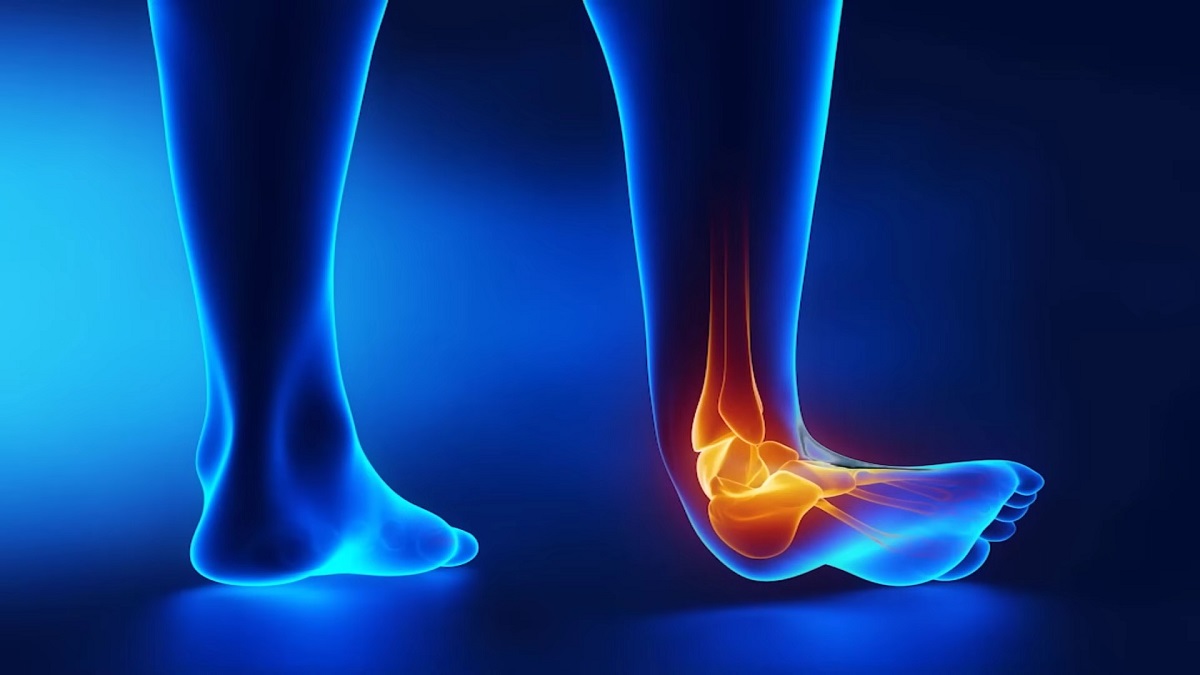
A
digital
medical
illustration
depicting
an
ankle
sprain|YouTube
Screenshot/Michigan
Foot
Doctors
Sprains
often
happen
when
foot
placement
or
movement
lacks
stability.
Footwear
that
hugs
the
ankle
and
offers
solid
lateral
support
can
make
precarious
landings
and
swift
direction
changes
less
risky.
A
wobbly
shoe
sets
the
stage
for
unfortunate
mishaps,
especially
in
fast-paced
activities
like
basketball
or
soccer.
Achilles
Tendinitis
Inflammation
of
the
Achilles
tendon
comes
from
overuse
or
shoes
that
sabotage
a
healthy
heel-to-toe
transition.
Footgear
with
proper
heel
cushioning
is
a
huge
help
in
lessening
stress
on
that
tendon.
Some
folks
insist
on
wearing
old,
worn-out
sneakers,
not
realizing
each
sprint
can
push
them
closer
to
chronic
pain.
Blisters
and
Calluses
Friction
is
the
culprit
behind
blisters
and
calluses.
Poorly
fitted
shoes
can
rub
skin
in
all
the
wrong
ways,
leaving
behind
painful
or
hardened
spots.
A
snug
fit
in
the
heel
and
enough
room
in
the
toe
box
ensures
fewer
foot
sores
and
fewer
tearful
visits
to
the
locker
room.
Sport-Specific
Footgear
Options
Every
athletic
activity
places
a
unique
set
of
demands
on
the
feet.
One-size-fits-all
is
not
a
good
approach;
it’s
like
running
a
marathon
in
flip-flops
and
wondering
why
ankles
feel
like
they’re
on
fire.
Consider
footwear
designed
for
the
sport
at
hand:
Running
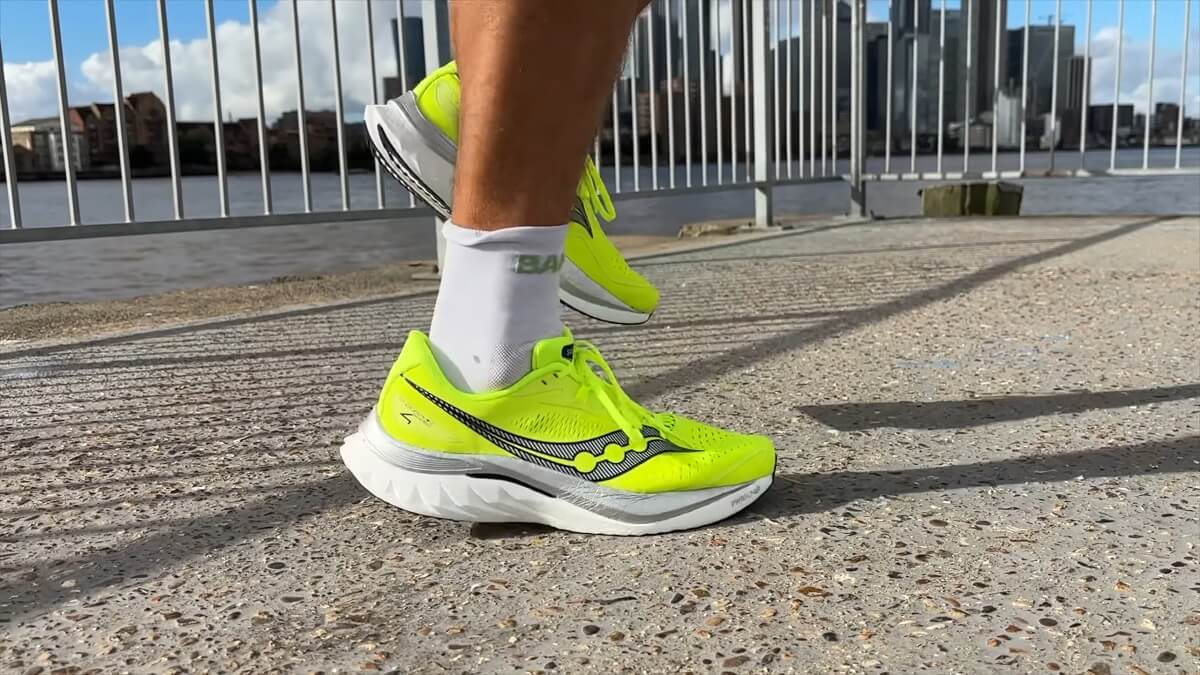
Saucony
Endorphin
Speed
4|YouTube
Screenshot/Ben
Parkes
Seek
options
with
ample
cushioning
and
motion
control.
That
combo
helps
soak
up
impact
from
each
stride
while
guiding
feet
into
a
stable
gait.
Some
companies
offer
specialized
models
for
overpronation
or
supination.
Skipping
those
features
can
mean
punishing
shin
splints
or
knee
pain.
Basketball
and
Tennis
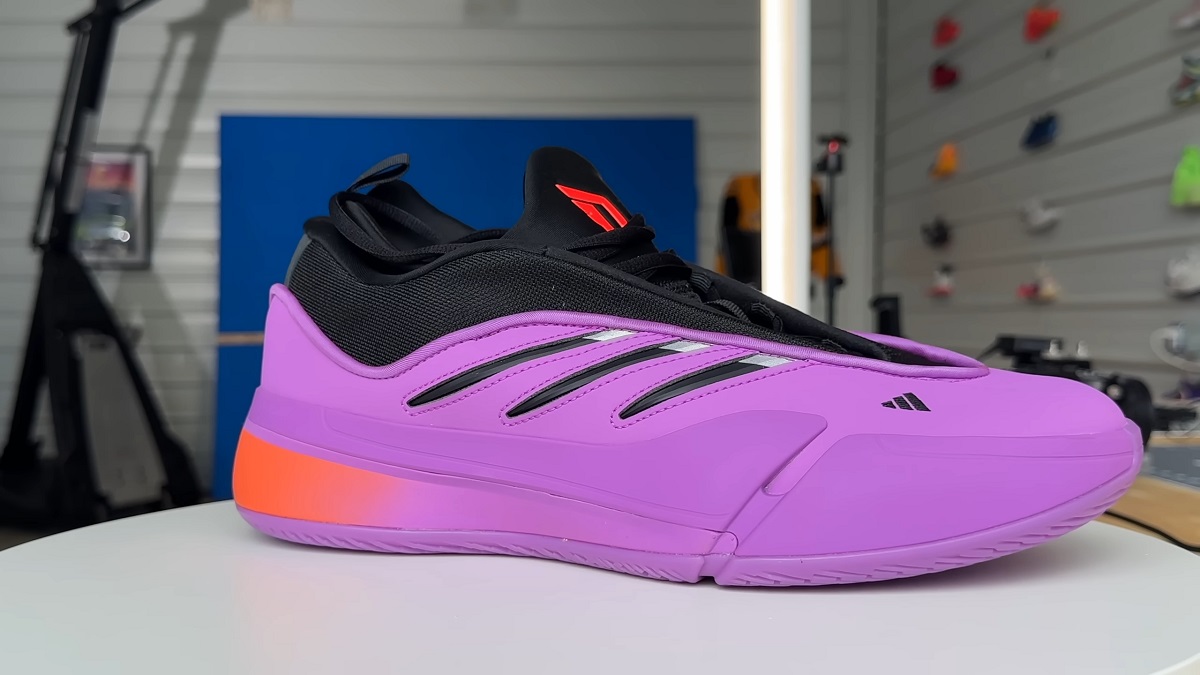
Shoes
with
strong
side
support
for
quick
movements
and
pivots|YouTube
Screenshot/Foot
Doctor
Zach
Expect
frequent
lateral
movements
on
the
court.
Shoes
need
a
well-structured
tread
and
solid
side
support
to
keep
ankles
from
rolling.
Pivoting,
cutting,
and
abrupt
stops
are
part
of
the
game,
so
footgear
must
be
stable
enough
to
keep
up.
Soccer
and
Football
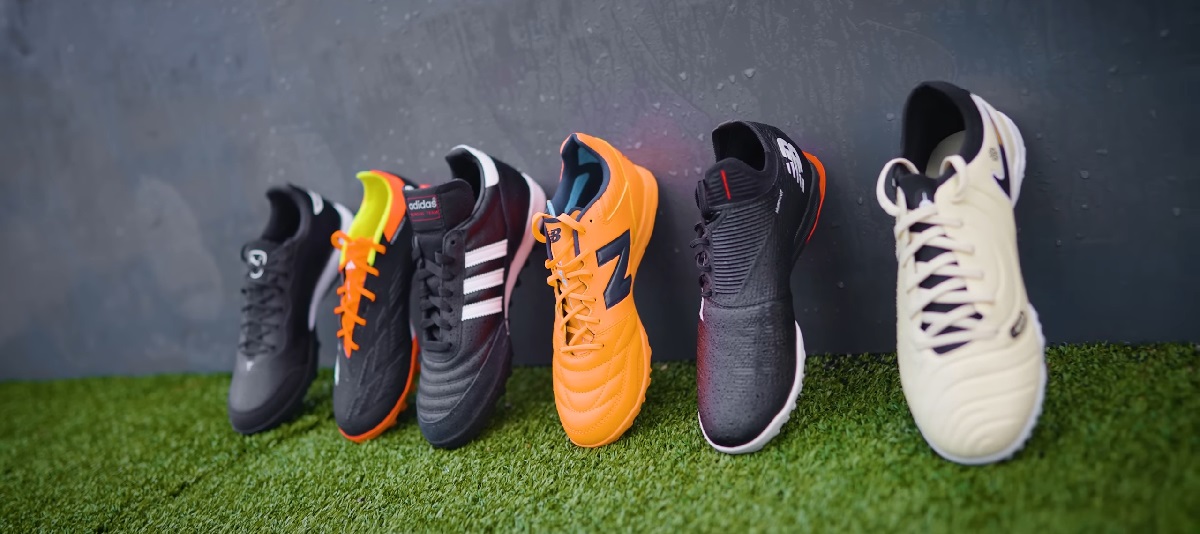
Best
football
shoes
for
turf
and
artificial
grass|YouTube
Screenshot/Unisport
Cleats
provide
necessary
grip
on
grass
or
turf.
Slipping
mid-play
is
a
surefire
way
to
land
on
the
bench
with
twisted
ankles
or
worse.
Different
field
conditions
require
specific
cleat
lengths
and
configurations,
so
choose
wisely.
Walking
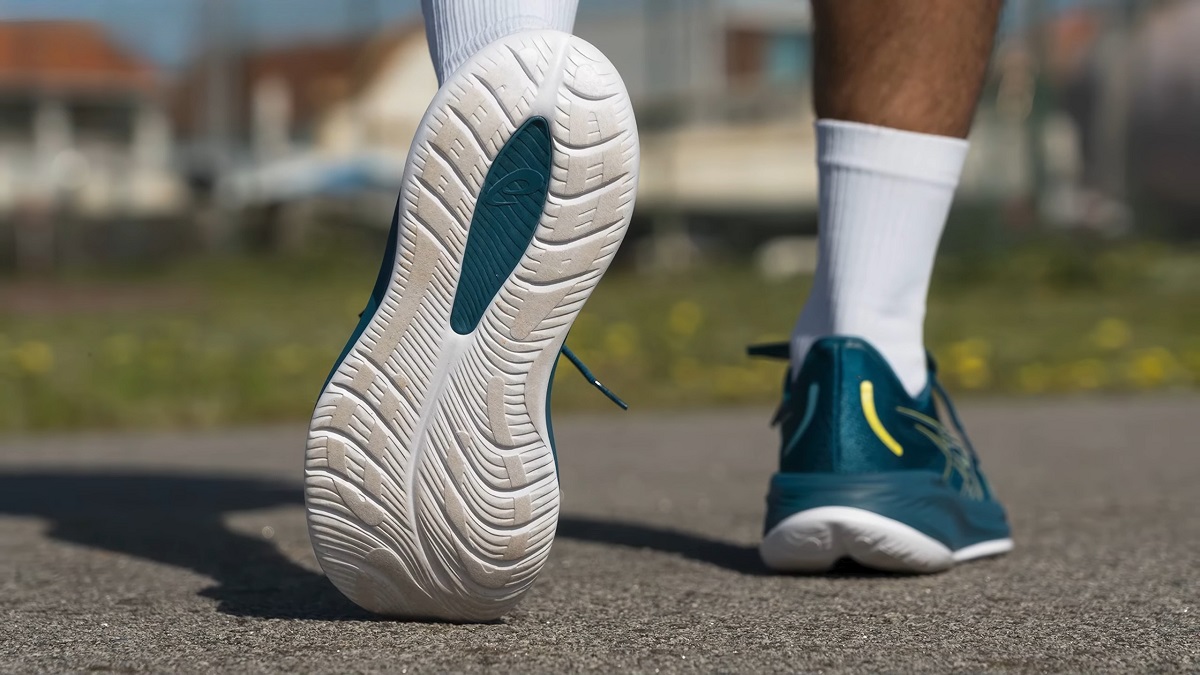
ASICS
Gel-Cumulus
26
sneakers|YouTube
Screenshot/Product
Guide
Although
less
intense
than
running,
walking
for
extended
periods
can
still
place
strain
on
feet.
Shoes
dedicated
to
walking
typically
feature
supportive
midsoles,
smooth
treads,
and
enough
shock
absorption
to
keep
strides
comfortable
throughout
the
day.
Key
Points
When
Purchasing
Athletic
Shoes
Walls
of
flashy
sneaker
designs
can
overwhelm
even
the
most
seasoned
athlete.
A
methodical
approach
ensures
the
best
possible
match
for
individual
goals
and
foot
shapes.
Assess
Foot
Type
Arches
come
in
various
forms,
from
neutral
to
dramatically
low
or
high.
Overpronation
or
supination
can
also
hinder
stride
efficiency
and
lead
to
pain.
Many
running
stores
offer
gait
analysis
or
foot
scans,
guiding
buyers
toward
models
that
counterbalance
tricky
biomechanics.
Fit
and
Comfort
A
snug
midfoot
and
heel,
combined
with
some
wiggle
room
up
front,
reduces
blister
risks.
Aim
for
roughly
a
thumb’s
width
between
the
longest
toe
and
the
shoe’s
tip.
That
small
gap
might
seem
unimportant,
but
ignoring
it
can
turn
a
pleasant
jog
into
a
regret-filled
shuffle.
Cushioning
and
Shock
Absorption
High-impact
sports
such
as
basketball
or
distance
running
require
shoes
with
extra
padding
underfoot.
Every
step
or
jump
generates
force
that
travels
up
through
bones
and
joints.
That’s
no
small
matter.
Sufficient
cushioning
lessens
harsh
vibrations
and
allows
athletes
to
focus
on
performance
instead
of
foot
discomfort.
Traction
Slipping
is
never
fun
unless
it’s
part
of
a
clown
act.
Basketball
players
contending
with
dusty
courts
or
tennis
enthusiasts
hoping
to
zip
across
a
baseline
benefit
immensely
from
top-notch
traction.
The
outsole’s
grip
helps
maintain
control,
particularly
during
abrupt
changes
of
direction.
Arch
Support
Flat,
high,
or
in-between
arches
all
need
adequate
reinforcement.
Proper
structural
support
keeps
feet
aligned,
minimizing
the
chance
of
bunions,
hammer
toes,
or
stress
fractures.
Insoles
tailored
to
unique
arch
shapes
offer
an
additional
layer
of
relief
and
can
be
a
lifesaver
for
those
coping
with
persistent
foot
pain.
The
Right
Moment
to
Replace
Footgear
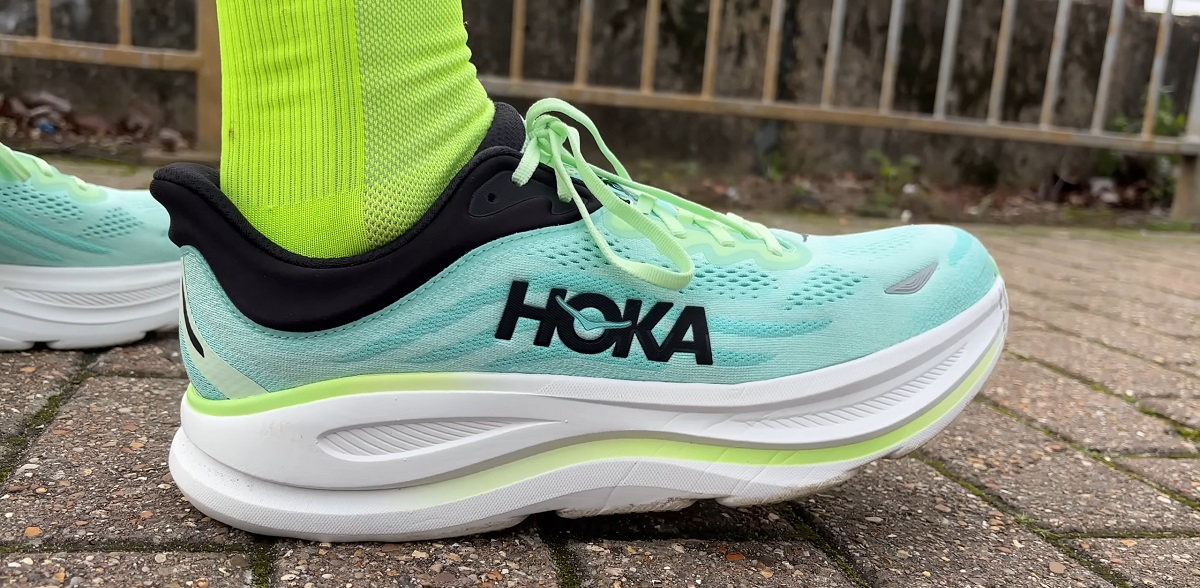
Hoka
Bondi
9|YouTube
Screenshot/Ben
Parkes
Sneakers
don’t
last
forever,
and
ignoring
wear-and-tear
can
invite
injuries.
Outsoles
get
slick,
insoles
lose
their
bounce,
and
the
upper
may
stretch
in
awkward
ways.
Keep
a
rough
timeline
in
mind:
-
Running
Shoes:
Typically
functional
for
about
300–500
miles,
translating
to
around
four
to
six
months
for
regular
runners.
Exceeding
that
range
can
prompt
shin
splints
and
other
unpleasant
aches. -
Basketball/Tennis
Shoes:
Constant
lateral
motion
and
quick
stops
lead
to
accelerated
breakdown,
often
within
three
to
six
months
of
heavy
use.
Consider
rotating
pairs
to
extend
lifespan
slightly. -
Cleats:
Generally
last
a
single
season,
though
exact
mileage
depends
on
field
conditions
and
intensity
of
play.
Watch
for
worn-down
studs
that
lead
to
comedic
slipping
episodes
on
wet
grass. -
Weightlifting
Shoes:
Survive
longer
due
to
limited
mileage,
but
repeated
squats
and
deadlifts
compress
the
midsole
over
time.
Replace
them
once
they
no
longer
provide
a
firm,
supportive
base.
Summary
Footgear
might
be
the
dullest
line
on
a
sports
shopping
list,
yet
it’s
the
secret
ingredient
for
comfort
and
injury
prevention.
The
right
blend
of
arch
support,
cushioning,
and
traction
can
propel
athletic
pursuits
and
spare
a
heap
of
physical
therapy
bills.
Throughout
the
years,
I’ve
seen
shoes
singlehandedly
preserve
an
athlete’s
well-being—or
sabotage
it
in
a
split
second.
Give
feet
the
respect
they
deserve.
Invest
in
footwear
that
treats
each
toe,
tendon,
and
joint
kindly.
Fewer
injuries,
smoother
movement,
and
a
happier
training
routine
are
worthy
rewards
for
tracking
down
that
perfect
pair.